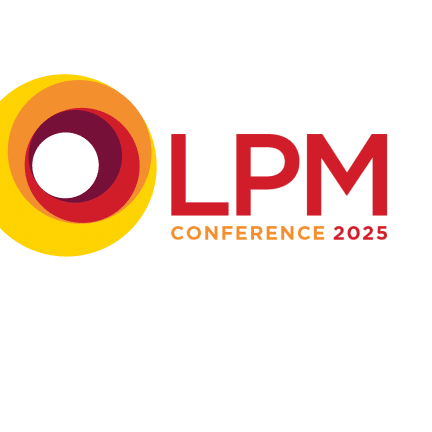
A three-step guide to convincing internal stakeholders to consider new PMS options
Getting buy-in for a PMS upgrade is a strategic process that requires clear, data-backed arguments to demonstrate it is a worthwhile investment. Tessaract explains how you can demonstrate that an upgraded PMS not only addresses today’s challenges but also strengthens your firm’s foundation for future growth
Upgrading your law firm’s practice management system (PMS) can enhance efficiency, reduce costs (and increase profitability), improve client satisfaction and optimise data integrity. However, getting internal stakeholders to consider new PMS options requires a well-researched, thoughtful approach that demonstrates the benefits to the firm’s operations, finances, clients and business model.
Here’s a guide to making a compelling case for exploring new PMS options.
1. Assess your current technology
A comprehensive analysis of your existing PMS setup is essential to highlight its strengths, weaknesses, opportunities and threats (SWOT). This assessment provides context: helping stakeholders understand what’s working, what’s not, and where improvements could yield significant benefits.
Key areas to assess include:
- Data connectivity: Determine whether your current PMS offers a single source of truth for client, case and financial data, or if fragmented systems are causing inefficiencies.
- Manual vs automated processes: Identify areas where manual, repetitive tasks could be automated to save time, reduce errors and improve productivity.
- Duplicate data entries: Are there any processes which lead to the same data being entered into different systems? Not only is this inefficient, it’s also massively risky: these processes need to be eliminated.
- Cybersecurity: Analyse the security posture of your current system. Outdated technology can pose serious risks of data breaches and ransomware attacks.
- User acceptance: Gauge the user satisfaction of the current PMS. High frustration or low adoption rates are indicators that a more intuitive solution could benefit the firm.
- Standardisation of processes: Assess whether the current PMS supports standardised workflows across different practice groups or if it hinders consistency and collaboration.
- Total cost of ownership (TCO): Evaluate the real cost of your current tech stack, accounting for licence fees, supporting infrastructure (such as servers, remote desktops and VPNs), maintenance costs and time required for troubleshooting. This will give stakeholders a clearer picture of ongoing expenses associated with the current system.
- ‘Emotional response’: Do your people love or hate using your existing system?
2. Assess the potential return on investment (ROI) of upgrading
To persuade stakeholders, try to quantify the potential ROI of a PMS upgrade. Here’s how:
- Efficiency gains: Research PMS upgrades that offer robust data search capabilities, streamlined workflows and automation. Estimate a 10-15% efficiency gain based on reduced time spent searching for data, improved document and billing workflows, and faster approvals.
- Cost shifts from capital expenditures (CapEx) to operational expenditures (OpEx): Moving from an on-premises solution to a cloud-based PMS reduces the financial burden of maintaining servers, as cloud providers handle infrastructure updates and maintenance.
- Reduced risk: Modern PMS systems typically have lower vulnerability to malware and ransomware, reducing the risk from cyber threats.
- Connectivity to emerging technology: Open-API systems will integrate with emerging technology like generative AI (genAI).
- Enhanced client experience: Demonstrate how a new PMS can strengthen your firm’s value proposition by improving response times, data accuracy and ease of access to case information.
- Employee experience and retention: Improved technology enhances employee satisfaction by reducing frustration, automating tedious tasks and minimising reliance on siloed knowledge and how to find it. This reduces turnover, reduces employee onboarding and makes the firm less vulnerable to gaps in experience or expertise.
- Future-proofing your firm: Even if you gauge that your existing systems pass muster this time, how confident are you that they have a long life- span? A properly selected upgrade can future-proof your firm for 10 years or more.
3. Present a detailed report and findings to key stakeholders
Once you’ve gathered and organised your analysis, present your findings in a structured report that speaks to your stakeholders’ concerns. Here’s how to shape your presentation:
- Highlight key challenges: Start by summarising the limitations of the current PMS, backed by data and findings from your SWOT analysis. This frames the need for change and aligns your presentation with the firm’s strategic goals.
- Provide comparative PMS options: Outline two to three new PMS options that address the identified issues. Include feature summaries, anticipated efficiency improvements, and projected ROI to showcase the value each option brings.
- Break down ROI: Present a straightforward calculation of potential ROI, demonstrating tangible benefits in terms of time savings, improved efficiency and risk reduction. Including a timeline for when the firm could expect to see these returns will make your case even more persuasive (a well-run implementation should be achievable in around six months).
- Address risk management: Emphasise the long-term cybersecurity benefits of a new PMS, particularly if moving to a cloud-native solution. Highlight the potential for reduced downtime, enhanced data security and compliance with regulations like GDPR.
- Incorporate real-world examples: Wherever possible, include case studies or testimonials from other firms that have successfully upgraded their PMS. Social proof builds trust and demonstrates that similar firms have benefited from modernising their technology.
By laying out these elements clearly, you’ll provide stakeholders with the information they need to make an informed decision, as well as a roadmap to realising the strategic and financial benefits of a new PMS.
If in doubt, and you have the budget available, it can help to engage external help. Legal technology consultants bring industry insights, expertise, and an unbiased perspective; which can be invaluable in evaluating your current system’s performance, understanding market options, and addressing your law firm’s unique needs. Consultants can provide:
- Objective analysis of your current system’s effectiveness.
- Market insight into PMS solutions suitable for law firms of your size and specialisation.
- Support for change management, ensuring that the transition is as smooth as possible if a new PMS is chosen.
Bringing in an objective external consultant can help you manage the workload of the project and lend credibility to your proposal. External consultants also help bridge the knowledge gap for stakeholders who may be less familiar with the intricacies of practice management technology.
Conclusion
Getting internal stakeholders on board with a PMS upgrade is a strategic process that requires clear, data-backed arguments. By conducting a thorough analysis of the current system, calculating potential ROI and presenting detailed findings (and engaging consultants if you can), you can create a compelling case that positions a new PMS as a worthwhile investment. With the right approach, you’ll demonstrate that an upgraded PMS not only addresses today’s challenges but also strengthens your firm’s foundation for future growth.




